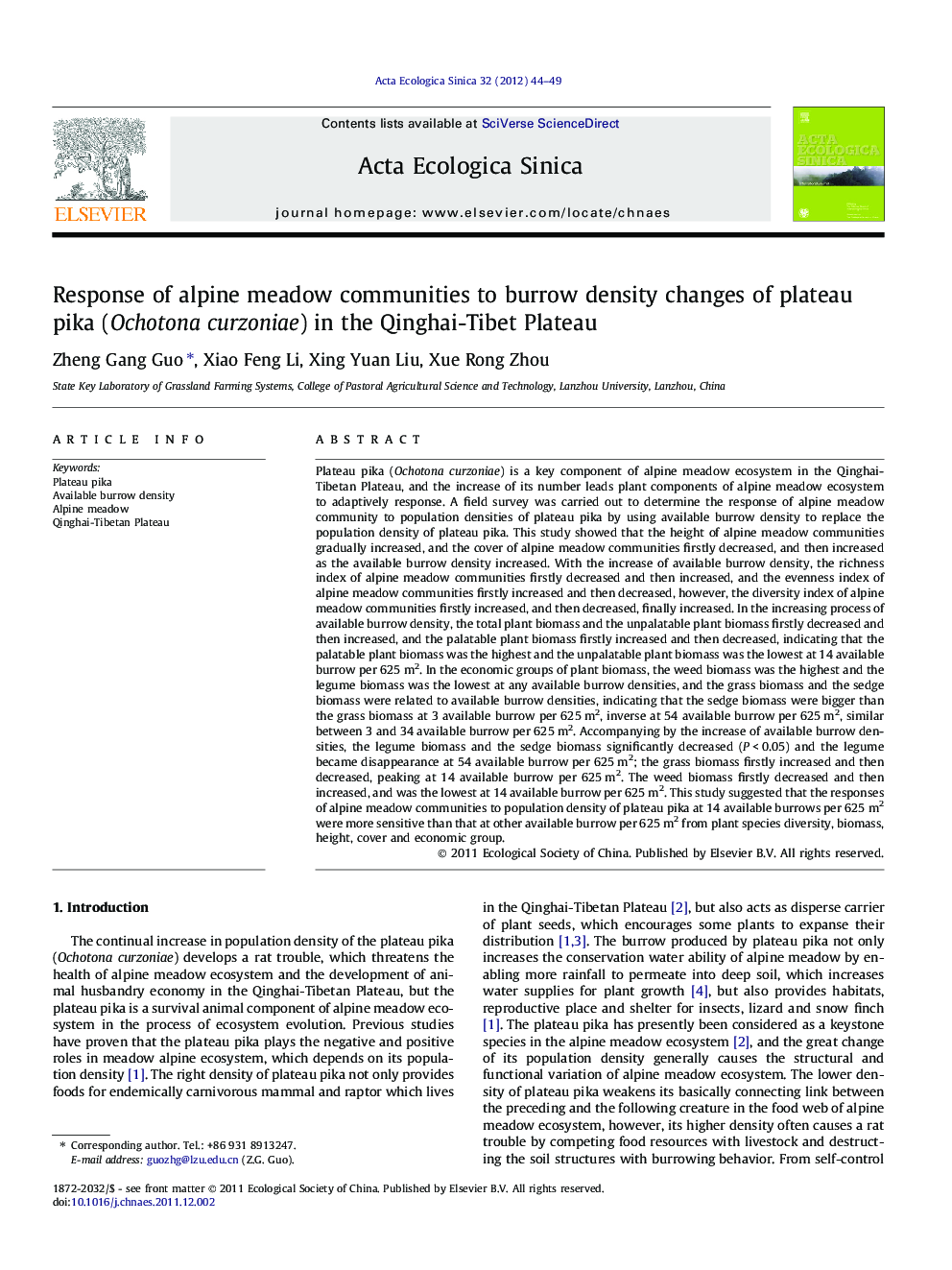| کد مقاله | کد نشریه | سال انتشار | مقاله انگلیسی | نسخه تمام متن |
|---|---|---|---|---|
| 4380012 | 1303958 | 2012 | 6 صفحه PDF | دانلود رایگان |

Plateau pika (Ochotona curzoniae) is a key component of alpine meadow ecosystem in the Qinghai-Tibetan Plateau, and the increase of its number leads plant components of alpine meadow ecosystem to adaptively response. A field survey was carried out to determine the response of alpine meadow community to population densities of plateau pika by using available burrow density to replace the population density of plateau pika. This study showed that the height of alpine meadow communities gradually increased, and the cover of alpine meadow communities firstly decreased, and then increased as the available burrow density increased. With the increase of available burrow density, the richness index of alpine meadow communities firstly decreased and then increased, and the evenness index of alpine meadow communities firstly increased and then decreased, however, the diversity index of alpine meadow communities firstly increased, and then decreased, finally increased. In the increasing process of available burrow density, the total plant biomass and the unpalatable plant biomass firstly decreased and then increased, and the palatable plant biomass firstly increased and then decreased, indicating that the palatable plant biomass was the highest and the unpalatable plant biomass was the lowest at 14 available burrow per 625 m2. In the economic groups of plant biomass, the weed biomass was the highest and the legume biomass was the lowest at any available burrow densities, and the grass biomass and the sedge biomass were related to available burrow densities, indicating that the sedge biomass were bigger than the grass biomass at 3 available burrow per 625 m2, inverse at 54 available burrow per 625 m2, similar between 3 and 34 available burrow per 625 m2. Accompanying by the increase of available burrow densities, the legume biomass and the sedge biomass significantly decreased (P < 0.05) and the legume became disappearance at 54 available burrow per 625 m2; the grass biomass firstly increased and then decreased, peaking at 14 available burrow per 625 m2. The weed biomass firstly decreased and then increased, and was the lowest at 14 available burrow per 625 m2. This study suggested that the responses of alpine meadow communities to population density of plateau pika at 14 available burrows per 625 m2 were more sensitive than that at other available burrow per 625 m2 from plant species diversity, biomass, height, cover and economic group.
Journal: Acta Ecologica Sinica - Volume 32, Issue 1, February 2012, Pages 44–49